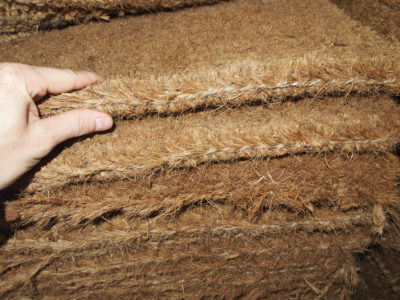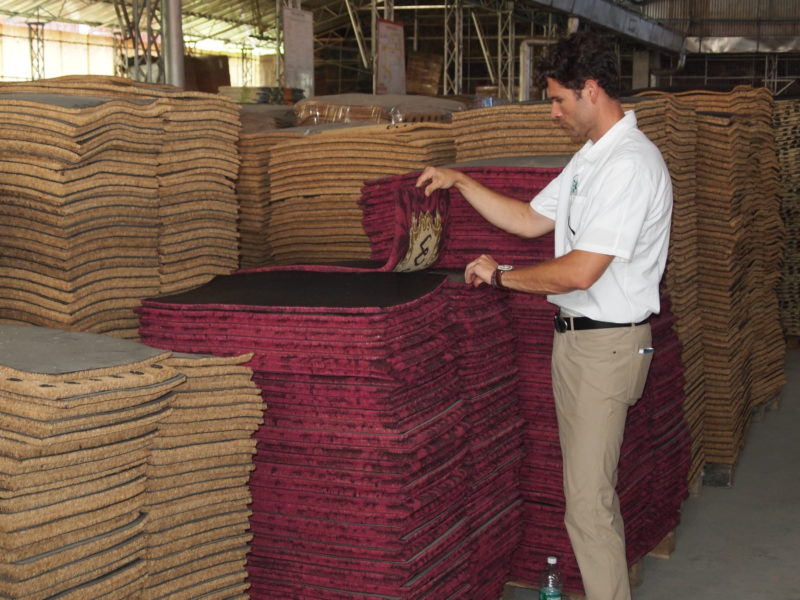
“The eco-friendly nature of coco coir doormats makes them a great addition to other items found in green homes, such as recycled water and solar electricity.”
Coco Coir doormats are made from the long, brown fibers of the coconut husk. Thus, they are far safer for the environment than doormats made from synthetics that are nonbiodegradable and might even trigger allergic reactions in those with sensitivities to these materials. The eco-friendly nature of coco coir doormats makes them a great addition to other items found in green homes, such as recycled water and solar electricity. Coir doormats, however, are sturdy enough to also use in other settings, such as on farms or at industrial businesses.
Processing Coco Coir Into Doormats
While white coir fibers are used to make rope, brown coir fibers are stronger and more commonly used for doormat production. The abundance of coconuts makes processing coir fibers into yarn — among other products — a sustainable system.
In terms of doormat construction, producers remove coconuts from their trees, separate the coco coir fibers from the husk, and then spin them to create coir yarn. After this initial processing, if a color other than the natural brown shade is desired, the coir is bleached — in most cases, because of environmental concerns, using hydrogen peroxide — and dyed to create an assortment of colors used to produce an eco-friendly as well as a visually appealing household accessory.
Eco-Friendly Coco Coir Doormats
Coco coir doormats are functional but also add a beautiful touch to a doorway entrance. These naturally created doormats are strong enough to withstand heavy foot traffic while allowing water to seep through the fibers, which helps prevent them from rotting and molding under weathered conditions.

“The naturally bristled texture of coir doormats helps clean dirt and mud from shoes efficiently.”
They are also resistant to fading in direct sunlight.
The naturally bristled texture of coir doormats helps clean dirt and mud from shoes efficiently. And these doormats are easy to clean without the need for machine cleaning. Just scrape the mud away with a tool, such as a garden hoe or metal spatula, or wait for it to dry and use a stiff brush to remove the debris. Use water to wash away any remaining dirt particles, and then hang the doormat to dry. Hang a dry but dirty coir doormat, and use a tool such as a broom to knock the dust loose.
With a doormat thickness of at least 1 inch, there is no need for additional non-environmentally friendly backing such as rubber or vinyl to hold the mat in place. Vinyl- and rubber-free coir mats allow water to seep through and out into the ground rather than holding it inside the fibers where it might cause mold or disintegration problems.
Although coir doormats have a lifespan of up to 10 years, once they do finally start to break down, you can add them to a compost pile rather than a landfill, as you would doormats constructed using synthetic materials.
The natural long-lasting quality of coir doormats reduces the need for doormat replacements, as in the case with synthetic doormats, due to faster disintegration. They provide a natural look and feel to any home or building.

Leave a Reply
You must be logged in to post a comment.